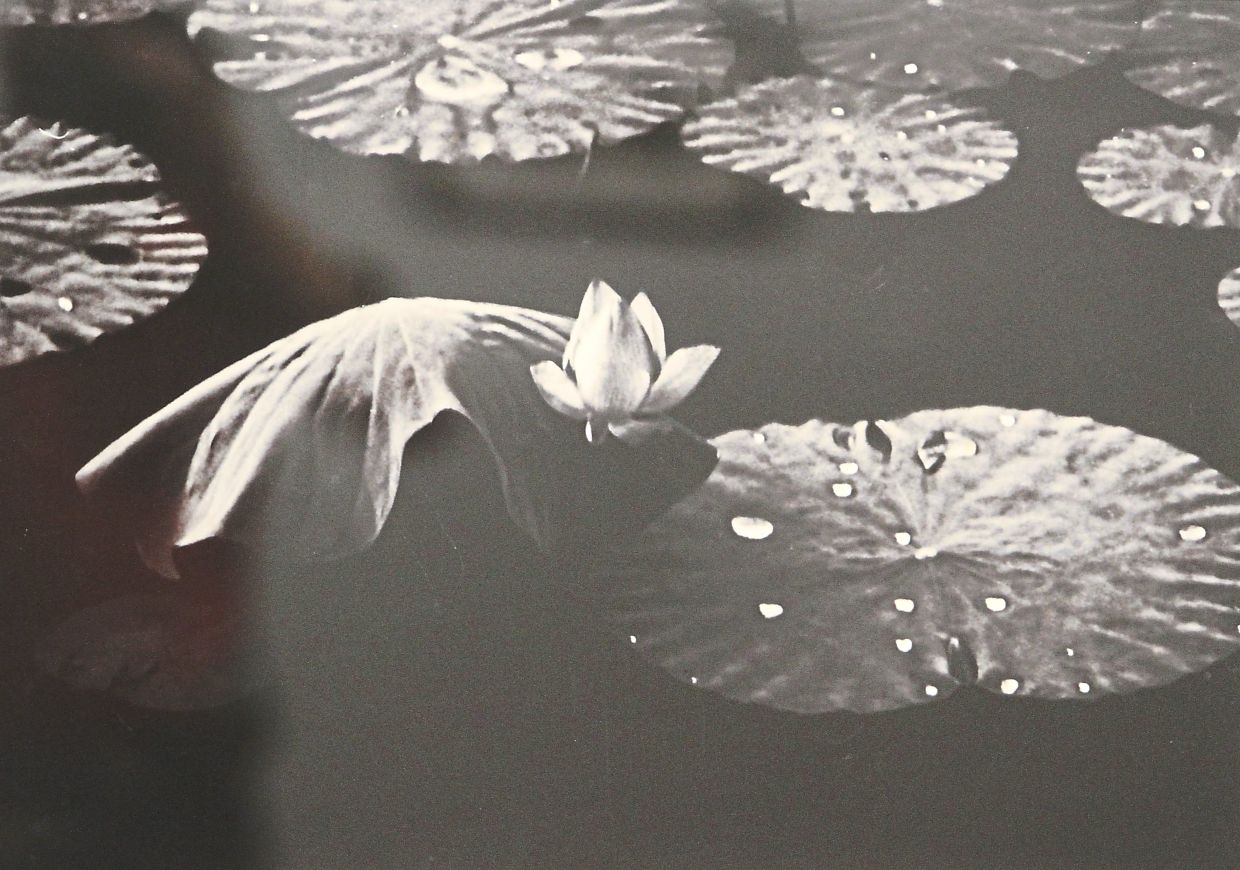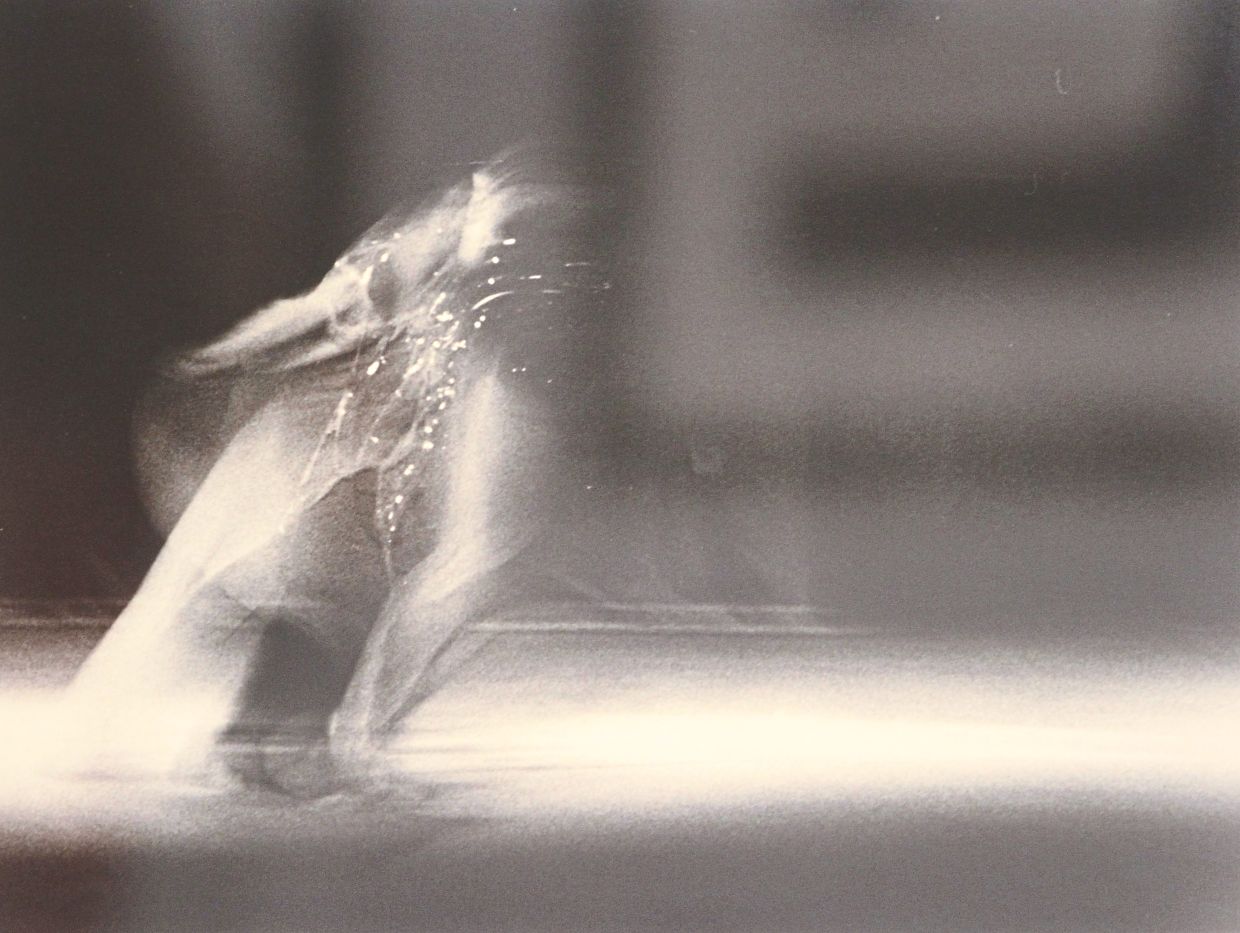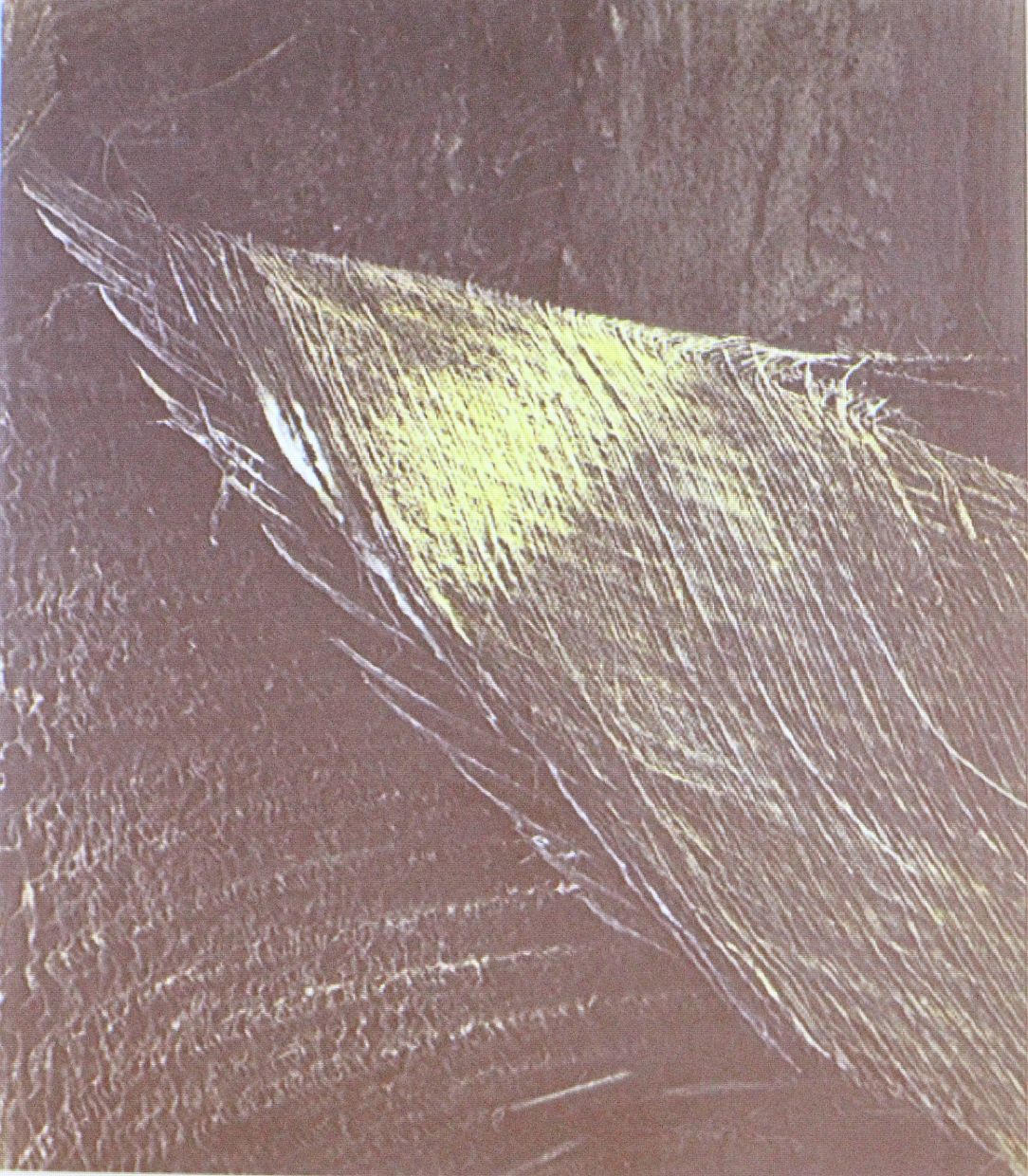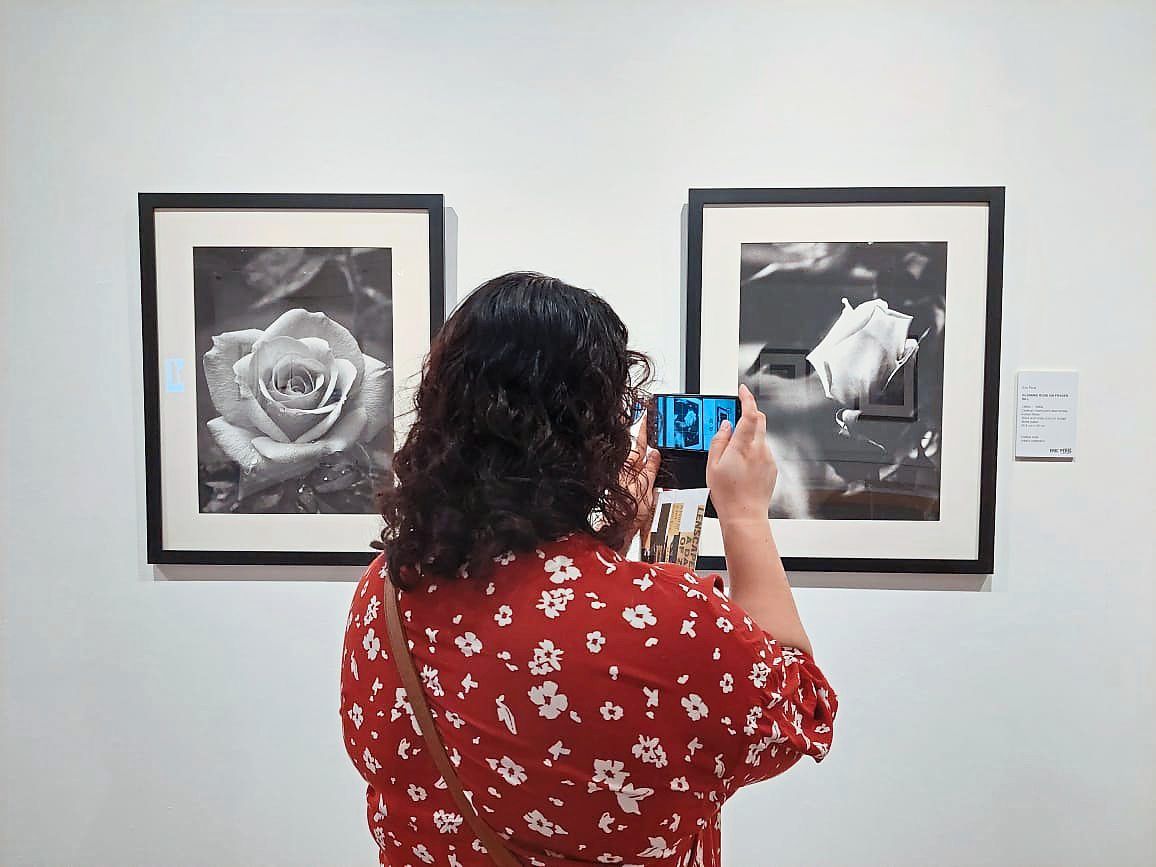‘You must know what you are creating. You are the creative mind. You don’t need to have an ‘eye’ for photography, there is no such rule. It’s not about the camera and how many rolls you take,’ says Peris. Photo: The Star/Yap Chee Hong
Eric Peris is a well-spoken and slender man of 84-years old and has spent his life making photographs (black and white photographs exclusively) and viewers can get a glimpse of the vast amount of work that he has produced at the National Art Gallery in Kuala Lumpur which is currently holding the year-long “Eric Peris Archive Project” exhibition (until May 2024).
Tomorrow (Nov 30) will see the public launch (3.30pm) of the exhibition (walk-in, free admission), which also includes the talk "Alchemy Of Light" by Peris at the National Art Gallery auditorium at 2pm.
This is an important exhibition for Malaysians especially those who appreciate photography and fine art because Peris’ name and works may not be familiar to Malaysians at large.
The name might not even ring a bell to aspiring and established photographers.
It is understandable – in a Malaysian context – as Peris has not received the coverage and acclaim unlike other countries where veteran photographers and the fine art of photography are given the spotlight at major galleries.
In Kuala Lumpur, there has only been a handful of local photography exhibitions at the institutions over the years, including Unpack-Repack: Archiving & Staging Ismail Hashim (1940-2013) in 2015 at the National Art Gallery and Bayangnya Itu Timbul Tenggelam: Photographic Cultures In Malaysia at Ilham Gallery in 2020.
Be that as it may, it is heartening to note that there is a photographer of such calibre like Peris to share his vision, body of work and artistic process at this archival show at the National Art Gallery.
And it is also important to note, while many people can easily name-check black and white photographers of the 20th century such as Ansel Adams or Henri Cartier-Bresson or Daido Moriyama, our very own Peris stands firmly on his own.
‘Never repeat the photos’
So who is Peris and why is the National Art Gallery taking the initiative of showcasing his works at Galeri Portret (which is located on the right of the entrance to the National Art Gallery)?
The aim of this show is to help the public – especially newcomers to Peris’ work – to understand this photographer-artist’s career path (bridging the fields of fine art and journalistic photography). It features over 100 archival documents, newspapers, brochures, and artworks from the artist himself and the National Art Gallery collection. Each exhibit offers an insight into Peris’ creative process, his influences, and the impact of his work on Malaysian photography.
Peris was born in 1939 in Johor Baru to a family of artists – his father, O Don Peris was a classically trained fine art painter who had received his training in Paris (there is a portrait of Eric’s mother painted by his father at the exhibition) while his mother was a dancer. His parents and his older sister were the source of inspiration to him as he would turn to them for advice and guidance.
His father had Peris read works by classical painters such as Rembrandt in order to understand light and shadow. His mother advised him never to take the same photos over and over again and he would also seek input from his sister who was well versed in colour theory.
“I would say that my inspiration comes from my father, mother and sister and mother earth. My father said I should look at my own inspiration when it came to photography. My mother told me to never repeat the photos I took. My sister was also knowledgeable in art and she had a very good understanding of colour so I would also turn to her for advice,” said Peris in a recent interview at the National Art Gallery.
Peris became a photojournalist in the 1950s for a magazine in Singapore and by 1970, he moved to Kuala Lumpur and continued working as a photojournalist for the Malaysian English daily, the New Straits Times, and worked there until he retired by the end of 1994.
As a photojournalist, he had spent time making photo essays as well as writing articles about photography among other things (articles of which can be seen at the exhibition). He also spent time working on his own photography and in 1982, he had his first photo exhibition and has had over 40 photo exhibitions to date.
Peris had decided early on that he would work with black and white film exclusively. For one, it was cheaper than colour film but more importantly, the monochromatic image held its own mystery and that made it exciting for him.
“You must be excited as a photographer. Now, I’ve got nothing against colour photography but with colour, you already know what everything looks like. In black and white, you pay attention to the form and the design which is why black and white is more exciting to me.
“And if you want colour, why not paint your black and white photo? There’s nothing to stop the photographer from adding colour to the black and white image,” said Peris who did just that with some of his photographs.
Peris was most interested in photographing landscapes or “mother nature” as he calls it as it was what that excited him about photography even though he has photographed people and dancers such as Datuk Ramli Ibrahim. The exhibition is rife with wide landscapes of vegetation, flowers, trees, bodies of water etc. contrasted the against the open sky with cloud formations as a result of certain atmospheric conditions.
Be the creative mind
He would take his lonely excursions (walkabouts to train rides) and explore his surroundings and even travel the country as well as going overseas. Whenever he goes out with his camera though, he doesn’t go out with a photo he wants to take in his mind’s eye.
Instead, he would look and see what was presented to him. If not, he would wait if the light was not quite right.
“Photography is very demanding. You have to put in the work and you have to ask yourself, ‘Are you prepared to accept failure?’”
In August, Peris gave a talk as part of the “Artist Sharing” series at the auditorium of the National Art Gallery on where he spoke about his own personal journey as a photographer and insights into his process while also giving some really good advice to photographers.
Now while this writer did say that Peris is not as well known as he should be, the talk was attended by people who are familiar with him and his work. In fact, during the Q&A session, one of the members of the audience told Peris that he was just as inspirational as Cartier-Bresson. High praise indeed.
Peris however, is unconcerned with praise, fame or status and he has stated as such in other interviews. He considers himself a craftsman who is still working to improve his craft.
For Peris, photography is a solitary pursuit and that the photos that one takes is wholly dependent on the person taking it and even measuring one’s success or failure of the photograph is judged through the photographer alone.
“A photographer has to be alone when taking photographs. When you are alone, you argue with yourself. Should the composition be vertical or horizontal? You have to make these decisions and look at your own work and ask yourself what went wrong.
“You have to be the judge of your photographs because if you ask for somebody else’s opinion and follow what other people think you should do then it’s no longer your own photographs because you are following other people’s advice,” said Peris.
And in order to know whether one has taken a good or bad photograph is, again, up to the photographer.
“You must know what you are creating. You are the creative mind. You don’t need to have an ‘eye’ for photography, there is no such rule. It’s not about the camera and how many rolls you take. What’s important is ‘Do you understand the image you make?’”
There are however, boundaries when it come to the pursuit of photography and Peris had this to say about it.
“You can do anything as long as you don’t go against social norms,” said Peris about the wide subject matter afforded in photography and he would repeat that sentence throughout his talk.
“Be mindful of people’s sensitivities, other than that you are free to do what you want. The right to create is yours.”
The Eric Peris Archive Project is an exhibition currently showing at the Galeri Potret of the National Art Gallery in Kuala Lumpur. It will be on display until May 2024. Admission is free.
















